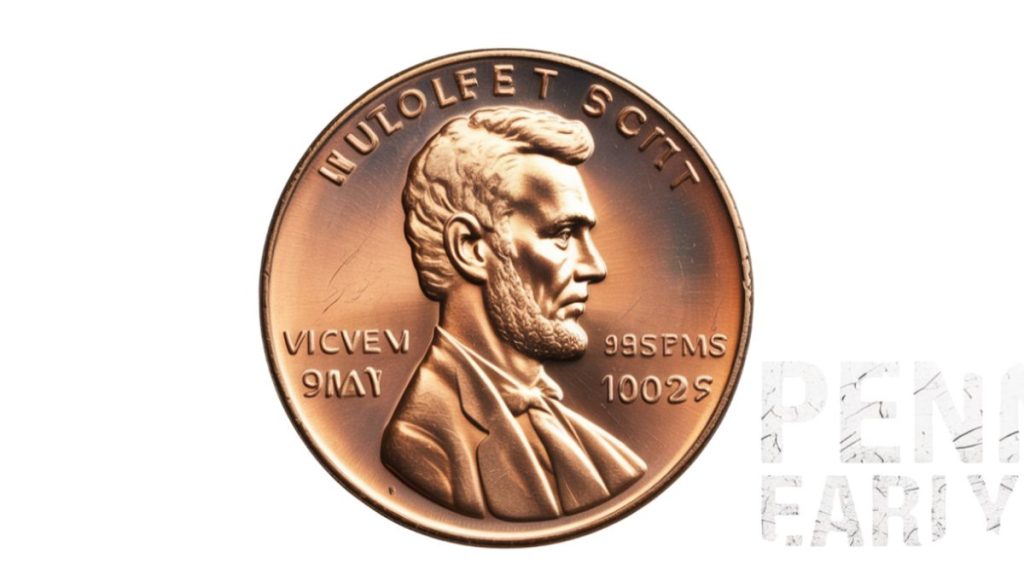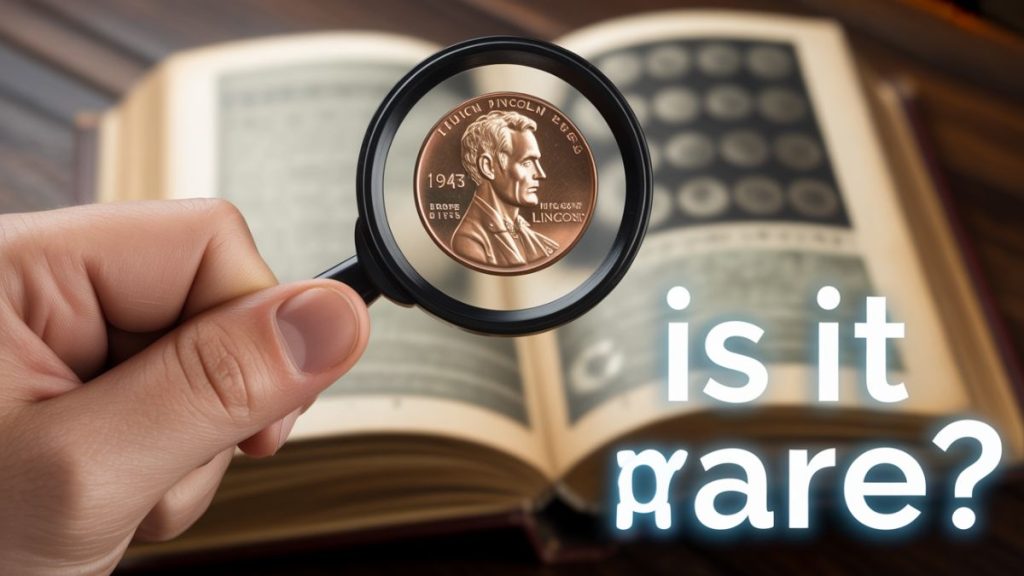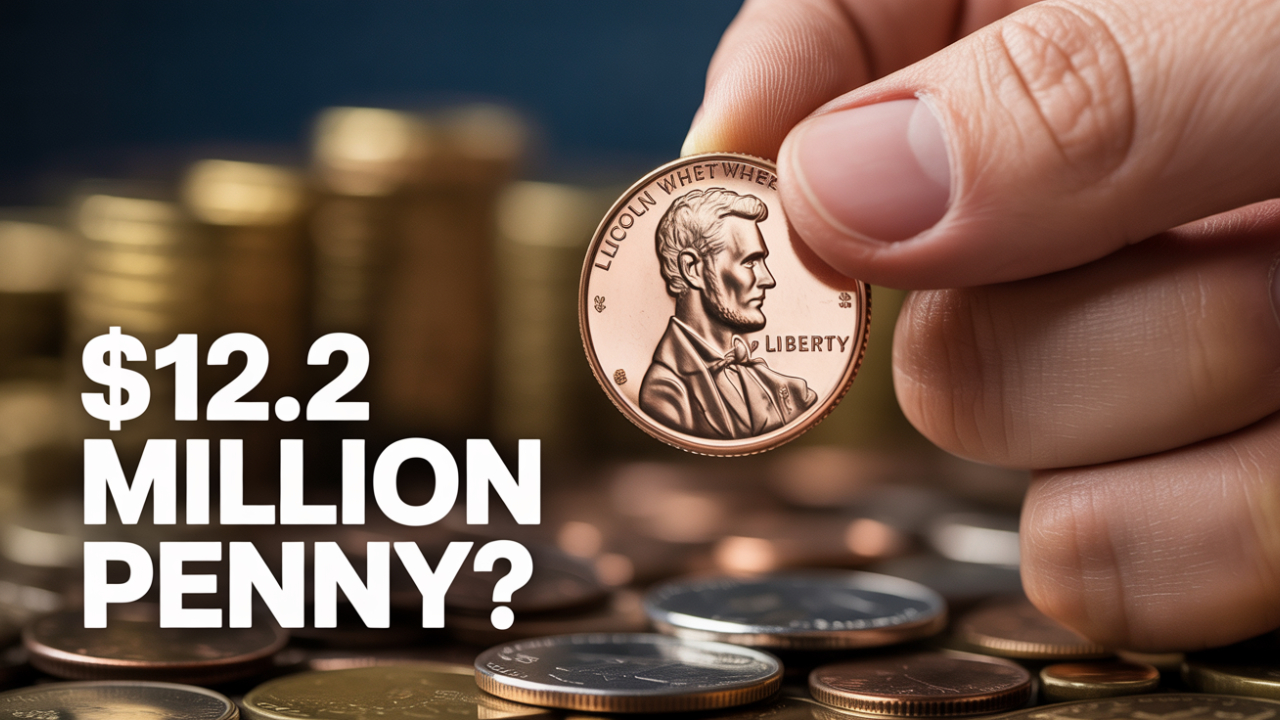Just imagine you’re counting change, and suddenly, between your fingers, you find a tiny coin of such enormous value that it could buy you a fancy house. Sounds completely filmy, right? But this is exactly the reality which is making waves among the coin collectors in the United States of late.
Twelve-point-two million dollars: value for a coin!
That’s how much value this little Lincoln Wheat Penny still in circulation has been valued at- $12.2 million. This means somewhere- in a pocket, piggy bank, or old safe- that coin may still be lying, and that perhaps even that person might not know about it.
Genesis of the Lincoln Wheat Penny
The priceless coin was started by the year 1909 when it first made its way into the currency system of the US. This coins created a hype at the time in view of featuring the most famous US President-mr. Abraham Lincoln. Although most old Lincoln Wheat Pennies inserted in circulation today are only worth a few cents, some have become so special and rare that their demand has skyrocketed.

Among the rarest mint errors is the 1943 Bronze Wheat Penny, and this coin is making headlines today.
What makes the 1943 Bronze Penny so special?
During World War II, this year they started minting their cents using steel coins due to a lack in copper. That year, however, some coins were issued on the old bronze blanks. This event has brought this coin on the list of one of the rarest and most valuable ones around the world as of today.
Some experts think that it is a mint error-or perhaps a somewhat experimental example that should never have left the mint and gone into circulation. Fortunately, it did enter circulation and has been hidden ever since.
Actually, such coins are still in circulation?
That’s what a collector would think if you said that coin once. But the fact is different.
History is full of such usually-normal transactions that have yielded very rare treasures. Such coins always:
- accidentally are spent
- found in an estate after someone’s death
- can be in a pack received from the bank
- ages found lying in a piggy bank or before an old box
That’s why each time you handle a coin, it’s important to look closer. Who knows, maybe today that luck is on your side.
How do you know your Lincoln Penny is rare or not?
If old coins get into your collection or you come across them sometimes, here are the main identification points to focus on:

- Date and mint mark: 1909-S, 1914-D, 1922 (without D), and especially 1943 Bronze-these are regarded as the rarest types.
- Materials: A simple test is the magnet test. The coin will stick to a magnet if it is made of steel. However, if it is of copper or bronze, it won’t.
- The condition of the coin: The newer and less worn the coin is, the more valuable it will become.
Now what do you do if you think you have such a coin?
- Don’t clean it at all: Many persons rub their coins with the intention of shining them but ruin their historical value.
- Get a professional inspection: Take the coin to a certified coin grading organization like PCGS or NGC for inspection.
- Compare other sales: Check online auctions and collectors’ platforms for price and demand for similar coins.
- Consider an auction: If it turns out to be real, then sell it through a reputable auction house- where millionaire collectors bid.
Does it really happen?
Absolutely. While the chances are less, they are not impossible.
Many people have found coins worth several millions of dollars in garage sales, old piggy banks, or coffee cans.
And now that the $12.2 million Lincoln Wheat Penny is all the rage, old coins have been intensified even scanning over old coins. It’s almost like a new treasure hunt campaign has started across the nation.
Conclusion: Is your next treasure in your pocket?
And the biggest lesson of this story is about never underestimating ordinary things. The case may well be that coin today with its pass-on and turn-out would be the most defining moment of a lifetime.
Now that you are aware that an ordinary-looking Lincoln Penny may be worth millions, the next time you touch a change, be attuned to watching closely. Your luck can just about be in your pocket.
FAQs
Q1. What exactly is the $12.2 million Lincoln Wheat Penny?
A. It’s an ultra-rare 1943 Bronze Wheat Penny that was mistakenly minted during World War II when coins were supposed to be steel. Just a few exist, making it one of the most valuable coins in U.S. history. Its value comes from rarity, historical error, and high demand.
Q2. How could such a rare penny still be in circulation?
A. Many of these coins were unknowingly spent decades ago and blended into everyday coin jars, bank rolls, or change. People often inherit or find old coins without knowing their worth. That’s why this penny could still be hiding in someone’s pocket or piggy bank.
Q3. How can I tell if I have a valuable Lincoln Wheat Penny?
A. Start by checking the date and mint mark—rare ones include 1909-S, 1914-D, and especially 1943 Bronze. Do the magnet test: steel sticks, copper doesn’t. If it passes these, consult a coin grading service before drawing conclusions.
Q4. What should I do if I think I’ve found a rare penny?
A. Don’t clean it, as that can destroy its value. Take it to a reputable coin dealer or get it graded by professionals like PCGS or NGC. They can confirm if your penny is real and help guide you through selling or auctioning it.
Q5. Can anyone really find a million-dollar penny?
A. Yes, it has happened before. Rare coins have shown up in pocket change, yard sales, and inherited collections. While chances are slim, it’s definitely possible—and knowing what to look for gives you a real shot.


